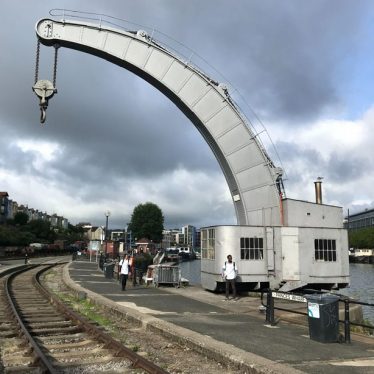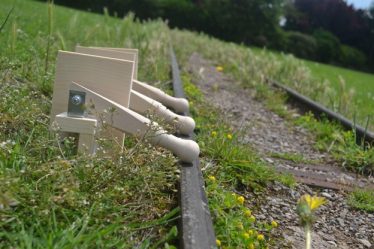Reimagining bad sounds – a creative approach to sound pollution
by Building Instruments research team

The acoustics industry has long been focussed on the mitigation of noise to reduce annoyance and stress to hopefully ensure that citizens are in good health. Quiet spaces are needed and appreciated by people. Many hours of research have gone into understanding the meaning and importance of tranquillity in urban areas. In terms of sound, tranquillity does not always mean quiet or silence, to paraphrase Natural Tranquillity by Clive Bentley, tranquillity can be defined as a serene state of mind – a feeling.
But what other sounds could have potential to improve wellbeing by perhaps being energetic as well as meditative, what about art? More often than not, art can bring communities together, Bristol is a prime example of this with its numerous art festivals and exhibitions. Can placing well designed sonic art in our cities provide a pleasant and inspiring rest-break from our rapid paced lives? What if we stop and imagine a future with drones and ‘silent’ driverless cars, surely their sounds would have a dramatic effect on how they are perceived? Perhaps we should take the time to pause and imagine how to design the sounds which makeup our future cities.
A few months into the Building Instruments project, new team members, Szabina Orosz and Ainolnaim Azizol brought forward fresh perspectives from their own disciplines to our highly multidisciplinary project. They provided a wealth of theoretical understanding from musical composition to qualitative analysis methodologies to incorporate into the citizen science and exhibition aspects of the project. How far could we take things, how far should we take things with the time we had?
The contributions from each team member to the Building Instruments project was valuable. It was enjoyable to dream up creative and often abstract ideas. We settled on the bold vision of people encountering guerilla sonic art installations placed all around the city. whilst we did push this train of thought we discussed how the use of citizen science could help us understand people’s perception of a soundscape using data collected within a mobile app. In the interest of budget, time management and attainable targets, we prioritised our ideas into practical methodological steps.
From data to soundwalk exhibition
Before the development of our soundwalk exhibition, we needed to establish a baseline idea of what kind of reaction or emotion the general public already had to the acoustic environment around them. We did this by interviewing the public in a few locations around the city, Queen Square, The Centre and Spike Island. We managed to capture a wide range of reactions from a relatively small data sample in these locations.
Our initial ideas to situate physical sonic art installations, such air vents playing windchimes or solar powered speakers playing modified audio of the recorded environment around the City of Bristol had to be reimagined as we didn’t have the capacity to safeguard the physical installations. After creating a long ‘short-list’ of locations in Bristol to present the art installations to the public, we concluded that a proof of concept in one location (Spike Island) would be far more achievable and therefore beneficial to the research endeavours. We approached artists Kathy Hinde, Dave Meckin, Dan Pollard and collaborated with Tom Bonnett to reflect on our research and create acoustic exhibitions to present the changing soundscape of Spike Island within Echoes.xyz as an exhibition for Bristol Open Doors 2021, which had a footfall of over 1m people.
Soundwalk Exhibition

The purpose of the soundwalk exhibition was to encourage participants to listen deeply, to the existing urban acoustic climate, and reflect about whether changing the acoustic climate may have a positive effect on health and wellbeing. The exhibition used museum style narrations to guide participants around digital sonic art ‘installations’ which were played over headphones to provoke thought beyond the existing acoustic environment. Abstract sounds (defined as relating to objects that were not visible at the time) and practical ideas (such as digitally modulated sound from air conditioning vents) were also presented, as well as, sounds captured from carts on the harbourside rail tracks that mimicked historical merchant trailers and present day workshop sounds.

The responses we received from the questionnaire sent out post-event suggested that we had presented an engaging experience that may have not otherwise been considered by the general public – a first step to discovering whether sonic art can evoke positive emotion which can improve the wellbeing of the public.
Future views
We have just scraped the surface in this topic and are looking at the final product of the research and soundwalk as a medium or augmented reality tool from which we could start to investigate some follow-on questions related to the wellbeing aspect of soundscapes.
- could actually create positive emotions that reduce stress and improve wellbeing
- could we encourage people to imagine what a future soundscape could be like and
- how they could be involved
- could we provide a platform where people unfamiliar with the notions we were exploring could consider the impact of sound on our lives for the first time
We hope to find out and hope to continue the project.

